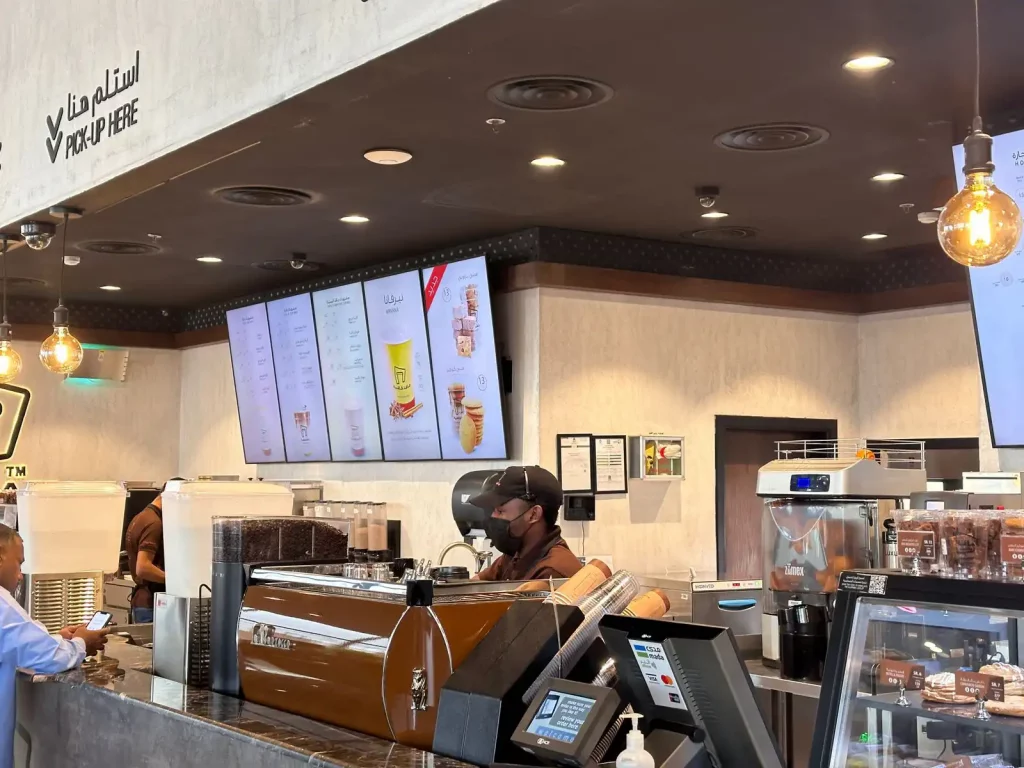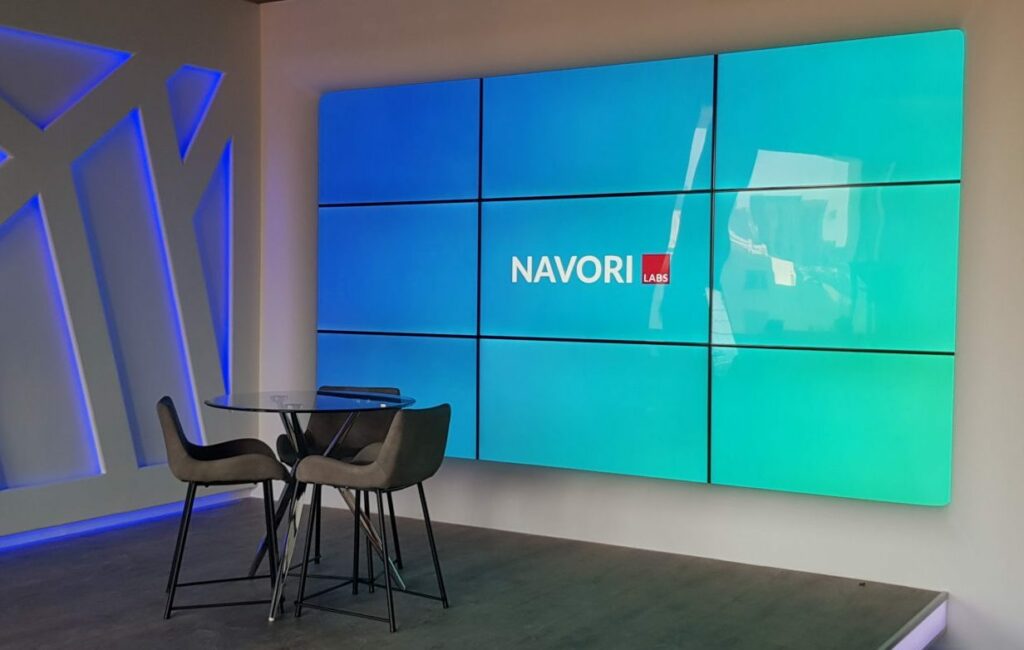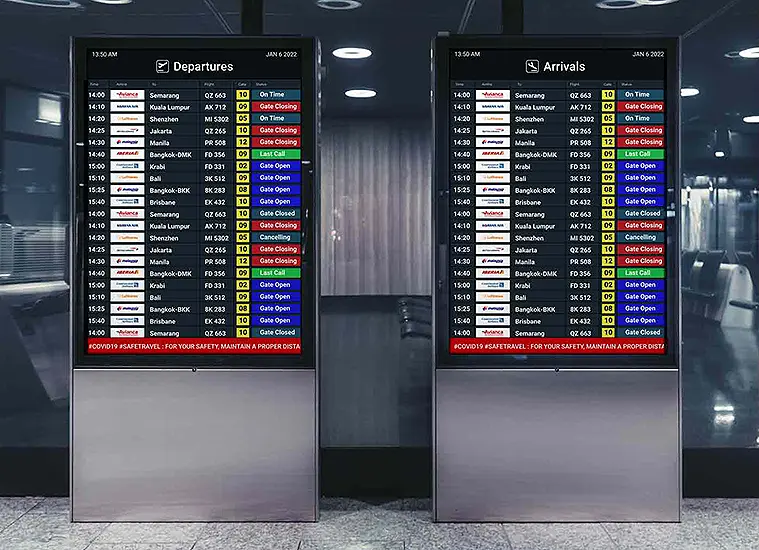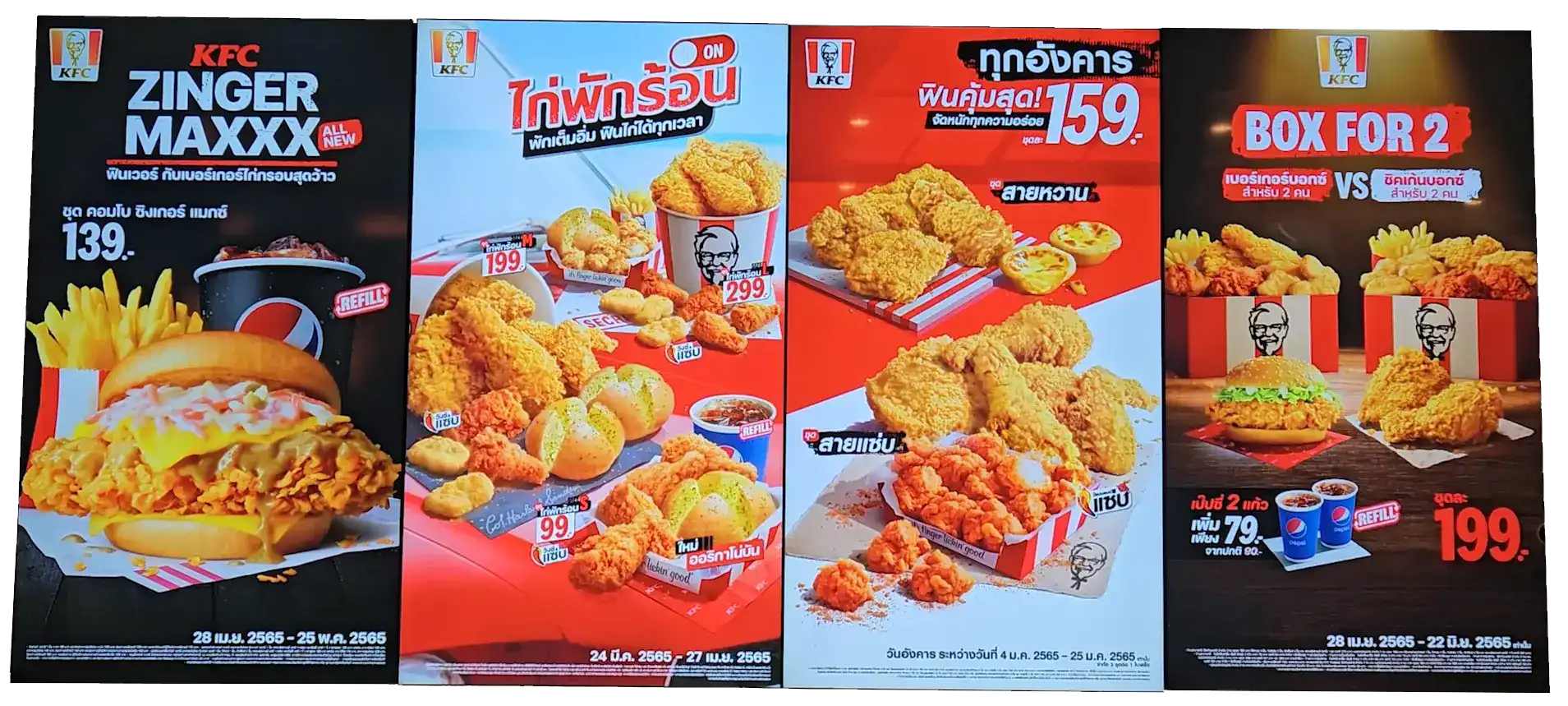Synchronizing Content Across
Multiple Players: How Does it Work?
Understanding Multiple Players Content Sync
As customers move through a retail space, queue up for service, or dine at a restaurant, synchronized content cultivates a unified and engaging messaging that strengthens brand identity and communication. A content is displayed across multiple screens, so each screen displays a portion of this content.
Whenever the audience has multiple screens within their field of view, such as a digital menu board, video wall, or multiple LED screens placed side by side, and content is distributed across all of these screens, synchronization comes into play.
In a context where each screen has its own media player device or SoC screen running Navori player app, the goal is to synchronize the rendering and transitions from one media to another.
Users need to synchronize all types of content deliverable by the software, including real-time data, videos… regardless of the hardware used.
Why is a specific sync feature is needed?
Imagine a scenario where multiple screens are present in a common area, with each screen connected to its own standalone player device. If you send the same program to every player, the content will eventually end up out of sync. This happens because each device’s internal clock operates at a slightly different speed. Since each device runs independently there is no way to synchronize their content.
Over time, the problem gets worse as the time difference increases. At some point, you will see random content playing on each individual screen. Avoiding this situation can help preserve the overall experience.
You need software that lets player app constantly communicate with the backend server so they can synchronize their clocks. Synchronizing the players ensures that the content is displayed consistently on all screens.
The player app must operate on a time basis instead of playing the media one after the other. Navori offers precision to the 1/30th of a second for perfectly synchronized rendering
Who is it for?
Digital menu board, indoor and drive thru
By synchronizing content across multiple screens, digital menu boards maintain consistency in displaying menu items, pricing, and promotions. This ensures that customers receive a unified information regardless of which part of the menu board they are viewing, thereby reducing confusion and enhancing the overall customer experience.
Videowall
Video walls are made up of multiple display screens arranged in close proximity to create a larger, unified display. Synchronization ensures that content across all screens aligns perfectly, eliminating visual inconsistencies such as gaps or overlaps between individual displays. This creates a seamless and immersive viewing experience for the audience.
Business dashboards
Nowadays business dashboards are becoming increasingly common, displaying real-time KPIs from multiple departments or entities. Screen synchronization enhances the effectiveness of business dashboards by promoting live data consistency, enabling real-time updates, fostering collaboration, increasing visibility, facilitating customized views, and improving presentation and reporting capabilities
Social media boards
Whether professional or public social media have a growing amount of information to track, making it necessary to use multiple screens that must be synchronized. Synchronized social media boards allow organizations to amplify their reach and impact by displaying user-generated content, hashtags, and mentions in prominent locations. This not only encourages audience interaction but also extends the reach of social media campaigns and promotions.
Flight information display
Synchronizing Flight Information Display System (FIDS) screens is crucial for ensuring accurate and consistent information dissemination across airports and other transportation hubs. By synchronizing FIDS screens, passengers receive real-time updates on flight schedules, gate changes, delays, and other vital information simultaneously across all displays.
Multi-screen synchronization techniques
Video walls and multi-screen installations rely on different setups to screen their content:
A dedicated media player for each screen
Each screen receives a discrete video signal from each player device device. Screens can show different programming or synchronized content if the digital signage software supports the feature.
A single standalone player with multiple video outputs
Typically, a PC or Android device features a powerful video card that can support discrete connections to multiple screens. In this scenario, you have the flexibility to either screen content across all screens simultaneously or assign individual content to specific screens as needed.
A single standalone player connected to daisy-chained screens
The screens are connected in a series, resulting in the need for only one video output. This simplifies the setup and reduces the complexity of managing multiple video outputs. In this configuration, the interconnected screens create a shared virtual canvas on which you can screen your content. You can also duplicate the image from the first screen on the others.
A single standalone player connected to a video splitter
The splitter receives its video signal from a media player, then duplicates and sends the signal to each screen. In this configuration, you can only show the same content on each screen. It’s not possible to extend content across many screens or show different content on each screen.
Digital menu boards
Quick-service restaurants will often install digital menu boards behind ordering counters to inform guests and promote limited-time offers. Weather-proof LED displays at the drive-through also make the ordering process faster and more efficient. Being able to synchronize content between indoor and outdoor screens can be quite useful.
Current QSR technology lets restaurants publish point-of-sale data on each digital menu board in real time. The digital signage CMS retrieves and formats the restaurant’s POS data before it’s displayed on one or more screens. Since the information shown is constantly updated, there are fewer customer complaints and the guest experience is improved.
In most QSR installations, a single standalone player device drives multiple screens. This is the most versatile option because content can be easily formatted based on the restaurant’s needs.
- Content can span all the screens (video, images) for maximum impact.
- Different content can be shown on one or more screens (templates/content zones). Content played in each zone is perfectly synchronized for a superior viewing experience.

Video walls
Video wall solutions let you make an impression. You can blow up your content across multiple screens and attract the audience’s attention from a distance. This is especially useful in large venues.
Video walls are becoming quite popular as screens and mounting hardware have become more affordable. When installed in office lobbies and retail stores, video walls can help enhance a brand, promote luxury items, and impress visitors.
Multi-screen video walls offer a visually interesting canvas on which you screen content. To achieve maximum impact, digital signage screens can be organized in a grid or geometric pattern.
- A linear or circular arrangement of screens mounted on a wall.
- Staggered digital signage screens in a stairway or a hallway.
- Groups of screens mounted on a ceiling or other vertical surface.
Distributing content across multiple screens requires professional video wall software.

Flight information display systems
Venues such as busy subway stations or train stations often deal with large crowds. These locations benefit from video walls and multi-screen transportation status boards by keeping commuters informed as they travel. Synchronized content plays across multiple digital screens and ensures a better experience for commuters. People see the same information on every screen within their visual range which is perfect for this application.
Synchronized content can also be triggered and played using touch screens. You can also use external devices, like physical buttons or keyboards to call up information on demand. This method can be used to screen wayfinding content or transit status information.

Is your digital signage software up to the task?
Content synchronization is essential to the success of any multi-screen digital signage project. When selecting a digital signage solution, it pays to ask questions because not all software is created equal. Here are some features you should look for.
Player clock synchronization
Navori Labs’ Navori digital signage software uses a time-stamped streamer to synchronize each device’s clock with the backend server. This method ensures every standalone player plays perfectly synchronized content.
If your digital signage software doesn’t support this feature, your content may not synchronize across multiple media players.
Enhanced screen layout management
When comparing digital signage software, ask how easy it is to switch between zoned content layouts and full-screen content. The answer may surprise you.
Some software products lock users into static layouts making it difficult to switch between a layout or full-screen content. When this happens, you need to use workarounds and the results don’t always look good.
Navori Labs’ Navori software lets you drag and drop any template into any playlist. Play a mix of full-screen content (images, videos) with any template layout. Templates are handled like any other type of content so it’s easy to organize your playlists. When you’re done, you just publish the changes to your players.
Navori treats multi-screen installations as a single canvas and there are no limits to the number of zones you can define. You can even stretch zones across multiple screens for creative effect. It’s easy to achieve great results when there are no limits.
A flexible and adaptable template designer
Navori Labs’ Navori template designer lets users create content zones that they can position in any location on any screen. Users can screen unique content on each screen or create template zones that extend across multiple screens for greater effect.
Multi-zoned templates and content that span every screen can be mixed together in a playlist to attract and retain the audience’s attention. Switching from full-screen to zoned layouts is instantaneous. There are no interruptions or black frames between content that could disrupt the viewing experience.
Recommended hardware
All the digital signage hardware recommended by Navori includes screen synchronization functionality. The only constraint is that all media players to be synchronized must be identical in terms of computing power, ideally the same brand and model.
